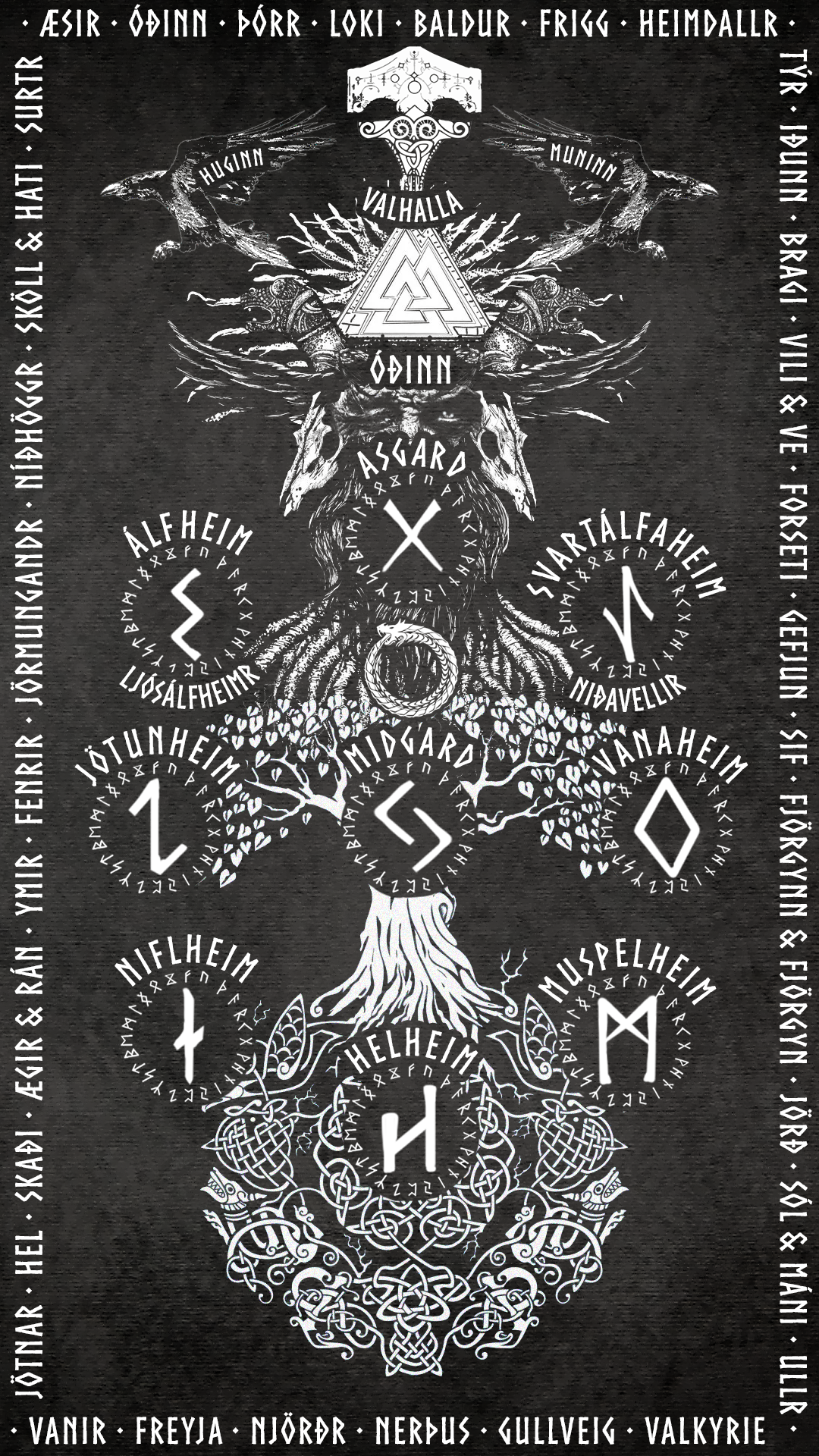
Trees play important roles in mysticism and mythology throughout the world. Many ancient artifacts depict sacred trees with divine properties. Most widespread of all are Abrahamic religions wherein the world tree resides with God in the Garden of Eden.
Scholars from various secular and spiritual traditions have had historical disputes regarding the nature of the cosmic tree. Varying interpretations eventually diverge and grow into distinguished belief systems, recursively branching out to accommodate ever evolving ideologies.
Regardless of whether the world tree is metaphorical or metaphysical, evolutionary biology theorists suggest that it was programmed into the human mind millions of years ago, stemming from our ancestors who lived in trees.
Etz Chaim, the "tree of life," is first described in the Tanakh, the Hebrew Bible. It is commonly applied in the figurative sense, referring to yeshivas, synagogues, various Jewish literary works, Kabbalah, and even the Torah itself.
In the Book of Genesis, when God creates the Garden of Eden, he plants "every tree that is pleasant to the sight, and good for food; the tree of life also in the midst of the garden, and the tree of the knowledge of good and evil."
The tree of life, also known as the tree of souls, is said to produce souls upon blooming. These new souls then fall into the Guf, the treasury of souls. The Talmud states that when the very last soul descends, the Messiah will return and the world will end. After Adam and Eve were driven from Eden, guardian angels called Cherubim were assigned to the east of the garden to prevent access to the tree of life.
The tree of the knowledge of good and evil bears forbidden fruit. A serpent persuaded Adam and Eve to disobey God by eating the fruit, and thus they were driven out of the Garden of Eden. Good and evil in this case is often applied as a literary device to encompass "everything" under binary terms. This interpretation implies that the forbidden fruit imparts knowledge extending far beyond the realm of morality.
The Book of Enoch states that everyone listed in the Book of Life, God's muster-roll of righteous people, will be permitted to eat from the tree of life after judgement day. The Book of Enoch is excluded from the formal canon of the Tanakh, and only the Beta Israel Jews of Ethiopia consider it to be canonical.
Biblical interpretations of the tree of life and tree of the knowledge of good and evil closely follow that of Hebrew scripture at first, but later diverges due to the additional New Testament. The metaphorical relevance of the tree of life is also more heavily emphasized in Christianity, with various religious authorities arguing it to symbolize Jesus, the cross, or even the love of God.
The Book of Revelation and the Book of Enoch share key parallels regarding the tree of life. In the Book of Revelation, the tree of life reappears in a new garden of paradise after the apocalypse. Those who "wash their robes" are then permitted to "have the right to the tree of life." Two trees of life are revealed, one "on either side of the river" which "bear twelve manner of fruits" "and the leaves of the tree were used for the healing of nations."
In the Quran, the world tree is called "the tree of immortality and possession that will not deteriorate." This singular tree aggregates aspects of both the tree of life and the tree of knowledge of good and evil mentioned in Christian and Hebrew sources. This union of the trees' divine properties indicates that the blessings they grant can not received independently of one another, they must be received in unison. The symbolism of the tree is applied mainly as a representation of virtues. Good virtues lead people to paradise, but bad virtues lead them to sin.
When Allah forbade Adam and Eve to eat from the tree of immortality, Iblis, the Quranic version of Satan, appeared before them. Iblis used temptation to lure Adam toward sin, when he whispered "O Adam, shall I direct you to the tree of immortality and possession that will not deteriorate?" Adam and Eve then eat the fruit and learn the concept of ownership.
Upon discovering the nature of possession, Adam and Eve realized their nakedness and vulnerabilities, covering themselves with leaves from the garden. The Arabic word for the leaves are used to refer to currency as well, the implication being that the invention of money arose as a consequence of learning about ownership from the forbidden fruit.

In this documentary, we talk about hidden caves in Canada. The country is famous for its beautiful scenery, but that is usually because of the lakes and mountains. Not a lot of peo...
Climate change is causing temperatures to rise. And everyone is consuming more water - whether it’s to make soda, microchips or cattle feed. But our reservoirs are running dry.In...
A new synthetic drug is killing more than gun crime, homicide, and car accidents combined. 100 times stronger than heroin, the deadly opioid fentanyl is cheap, potent, and small en...
The history of the Forbidden City begins with a bloody coup at the beginning of the 15th century when the ambitious field commander Prince Zhu Di took power.As the Yongle Emperor, ...